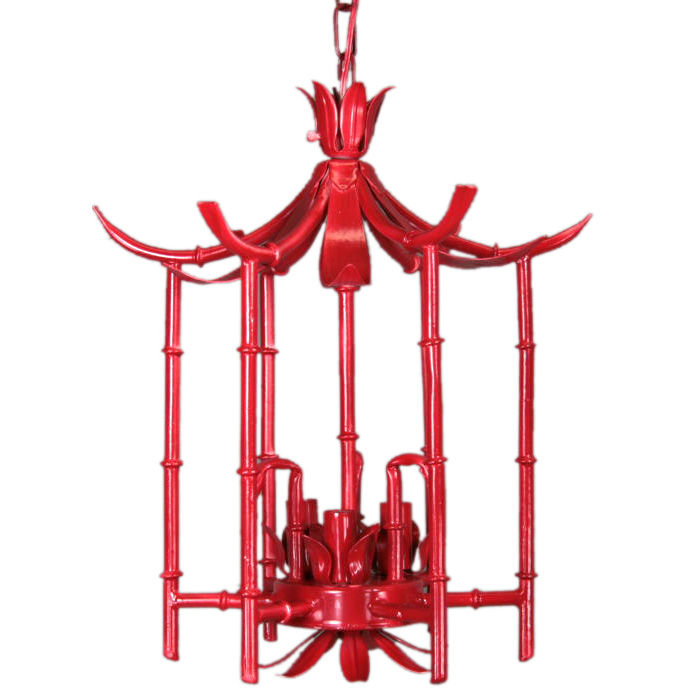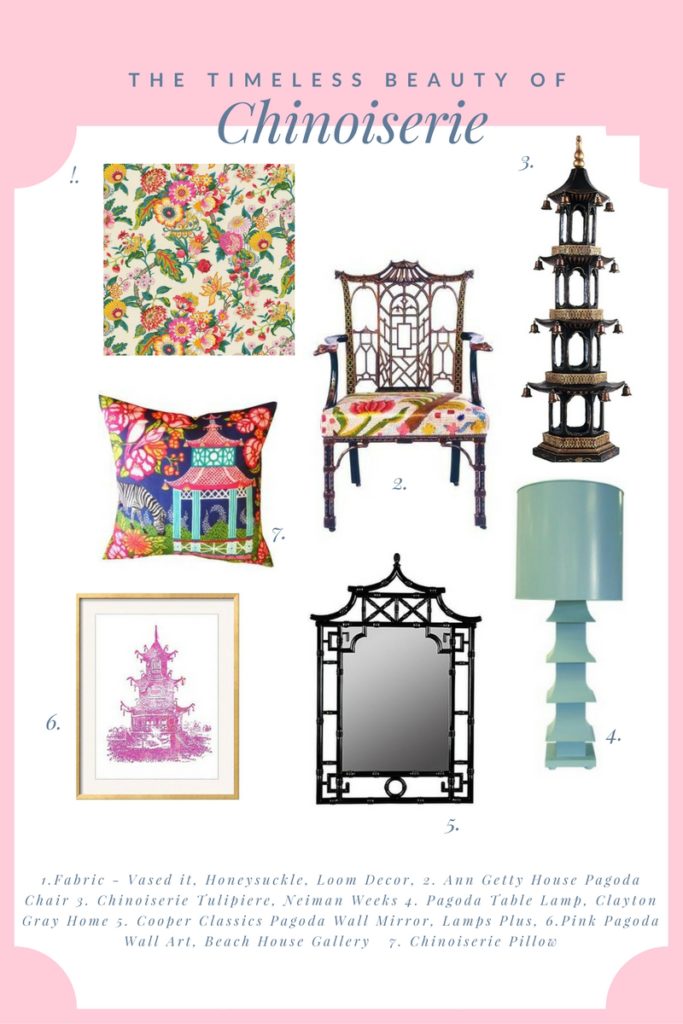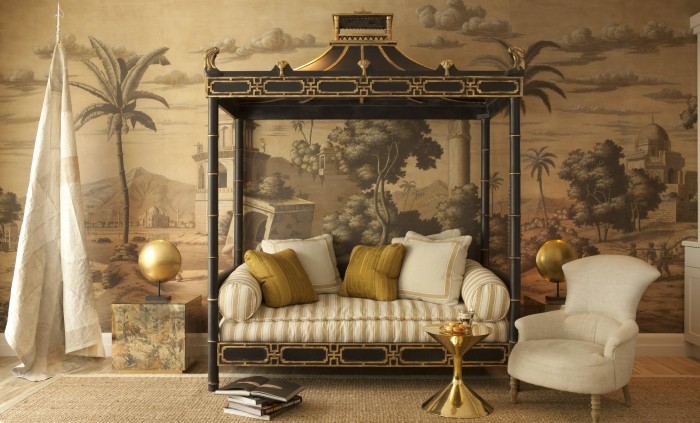
Of the many things I am drawn to, in love with, can’t get enough of, chinoiserie has to be one of the most potent. Chinoiserie, pronounced SHēnˌwäz(ə)ˈrē,ˌSHēnˈwäzərē, is the imitation and interpretation of Chinese motifs and techniques in Western art, furniture, and architecture, especially in the 18th-19th century. The sheer volume of information about the style defies belief, and I’ve found that you either love it like crazy or you don’t.
You’ve probably seen chinoiserie in your lifetime and may not have even known it. One of the most iconic of all chinoiserie design elements is the Pagoda chandelier. Endless iterations of its design keep the style both fresh and timeless and it literally works in any setting you can think of. seen in bold, glossy colors such as red, turquoise, orange and yellow, a pagoda chandelier adds whimsy and fantasy to any the space. It works in a small entry foyer, a powder room or even above a small dining table, (among a million other places).
It’s a little confusing these days in that any design style that includes vintage or antique Asian art, fabrics or wall coverings seems to be called “chinoiserie” when really, the style is actually Asian or Asian-influenced. A good rule of thumb is to keep in mind that true chinoiserie is a European thing. It’s Asian as seen through a Europen lens, if that makes sense.
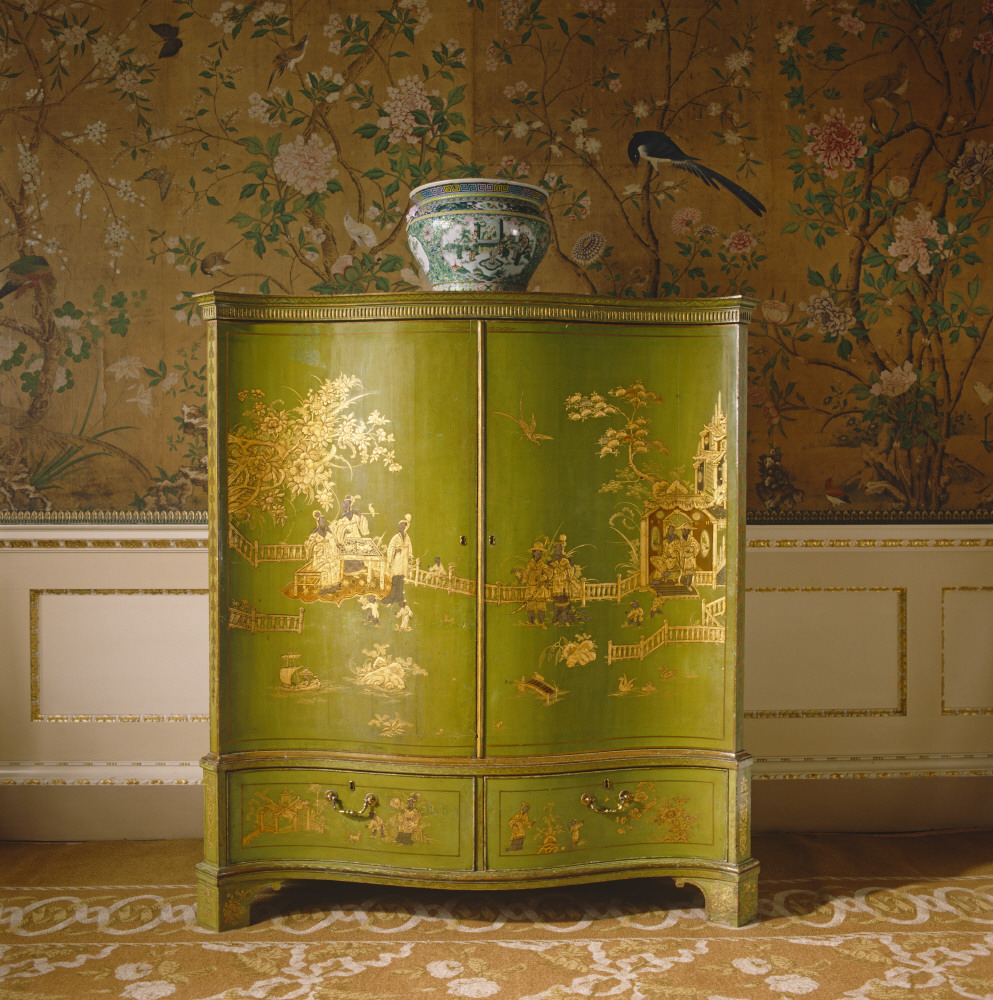
The very English Thomas Chippendale (who designed the cabinet above) took his interpretation of Asian art and furniture shapes and created works that were in a class all by themselves. These pieces, mixed with hand-painted French chinoiserie wall coverings, created countless elegant foundations for opulence and exoticism
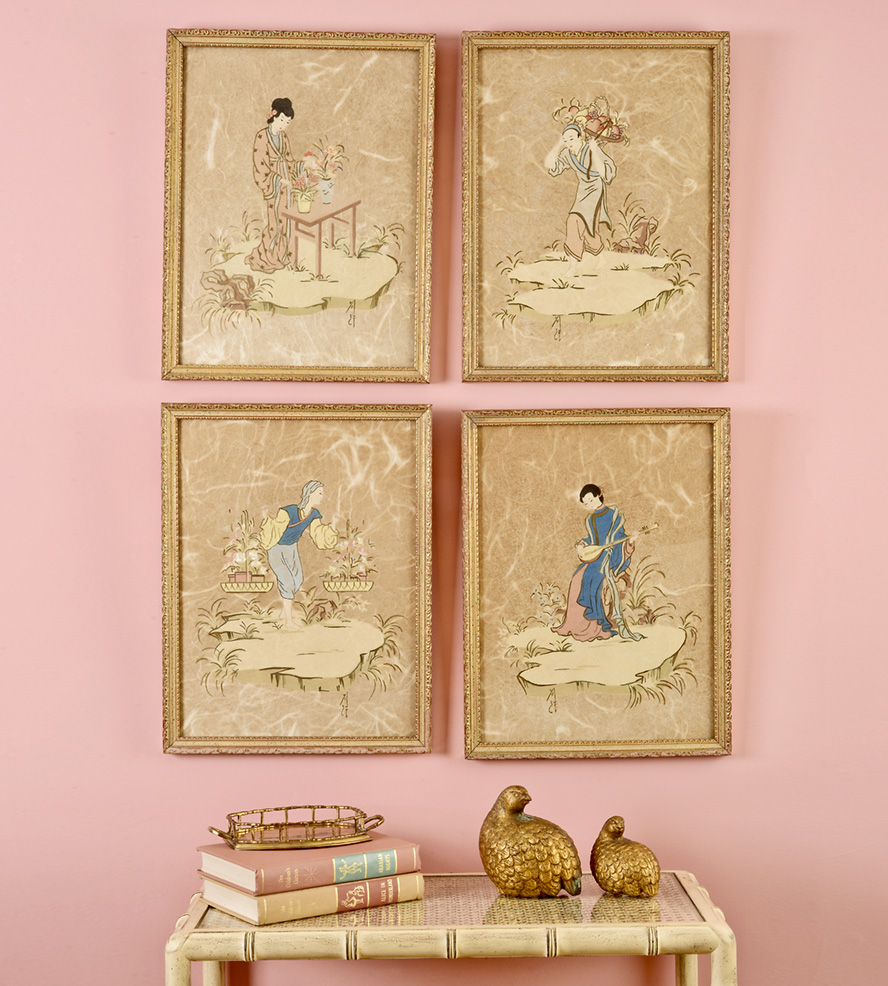
Everything about this picture makes me happy. The gilded quail, the faux bamboo table and brass tray and of course, the vintage Asian images. Chinoiserie went through a huge resurgence in the 1950’s and then again in the 1960’s and 70’s in the form of faux bamboo. The photo is really 1950’s-style chinoiserie, and it’s my second most favorite style. It literally goes with everything in any home. A faux bamboo brass tray is perfect – to corral french cut crystal perfume bottles, used to display an air plant in a cement dish, to hold a bunch of giant seashells – and you honestly cannot go wrong with faux bamboo. Ever. Or a gilded quail. I really think everyone needs a gilded quail.
Anyway, since I’m not going to be allowed to have the bedroom set any time soon, I’ve rounded up a few of my current modern chinoiserie crushes and mark my words, I’m going to have a vintage or antique pagoda somewhere in my house before year’s end!
Have a beautiful and creative week!
Back to Main Site

